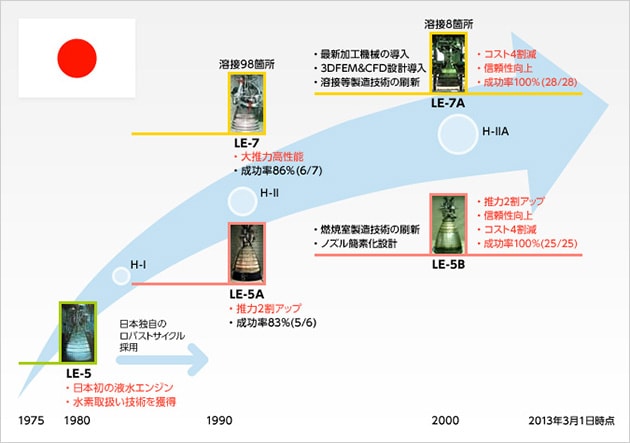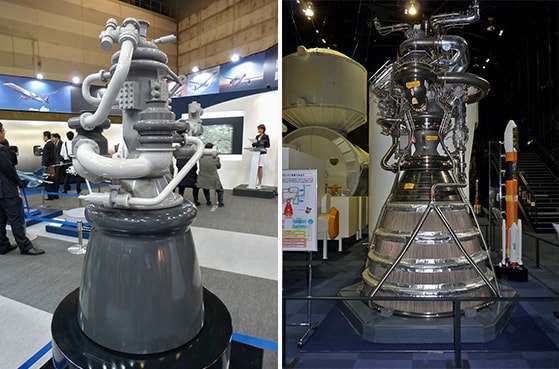
- Semiconductor Technology Now
Technology
Next-generation engine may also power crewed spaceflights
Liquid-fuel engines use a combination of liquid propellant and liquid oxidizer. Among various possible combinations, the most fuel efficient one with respect to thrust output is that of liquid hydrogen (LH2) and liquid oxygen (LOX). The H-II series has been using this combination for both first- and second-stage engines.
In a liquid-fuel engine, the propellant and oxidizer are pressurized by turbopumps before being mixed and burned in the combustion chamber. There are four types of liquid-fuel engines that use different cycles to drive turbopumps, as shown below:
| Post-turbine exhaust gas cycle | |||
|---|---|---|---|
| Closed cycle | Open cycle | ||
| Gas generation method | With sub-combustion chamber | Two-stage combustion | Gas generator |
| Without sub-combustion chamber | Full expander | Expander bleed | |
In all four cycles, the turbopumps' turbines are driven by the propellant gas. The two cycles on the upper row use the gas burned in the sub-combustion chamber, and the two cycles on the lower row use the unburned gas. The two cycles on the left column return the used gas back to the combustion chamber, and the ones on the right column release the gas as exhaust.
The cycles on the upper row can gain larger thrust due to the turbo-charging effect, and are therefore suitable for first-stage engines. The cycles on the right column essentially waste a certain portion of the propellant gas, lowering the specific impulse as a result. Generally speaking, the cycles on the left column are more advantageous for higher-stage engines.
The first LH2/LOX engine developed in Japan was LE-5, the second-stage engine for the H-I rocket. This was followed by LE-5A (for H-II) and LE-5B (for H-IIA/B), which were also second-stage engines. Development of high-thrust first-stage engines was also pursued, resulting in the LE-7 (for H-II) and LE-7A (for H-IIA/B) engines.
 |
The LE-5 series used the gas generator cycle system which was relatively easy to develop, whereas the LE-7 series for the H-II rockets adopted the two-stage combustion cycle, which could deliver higher performance but structurally more complex and difficult to develop. In fact, there were very few LH2/LOX engines that successfully deployed the two-stage combustion cycle before the LE-7 series, such as the one for the Space Shuttle and another for the Soviet rocket Energia.
But JAXA is now testing the next-generation LE-X engine based on the expander bleed cycle system, rather than the two-stage combustion cycle system that it had struggled to develop. The expander bleed cycle is Japan's proprietary technology that was developed and used for the LE-5A/B series.
 |



















